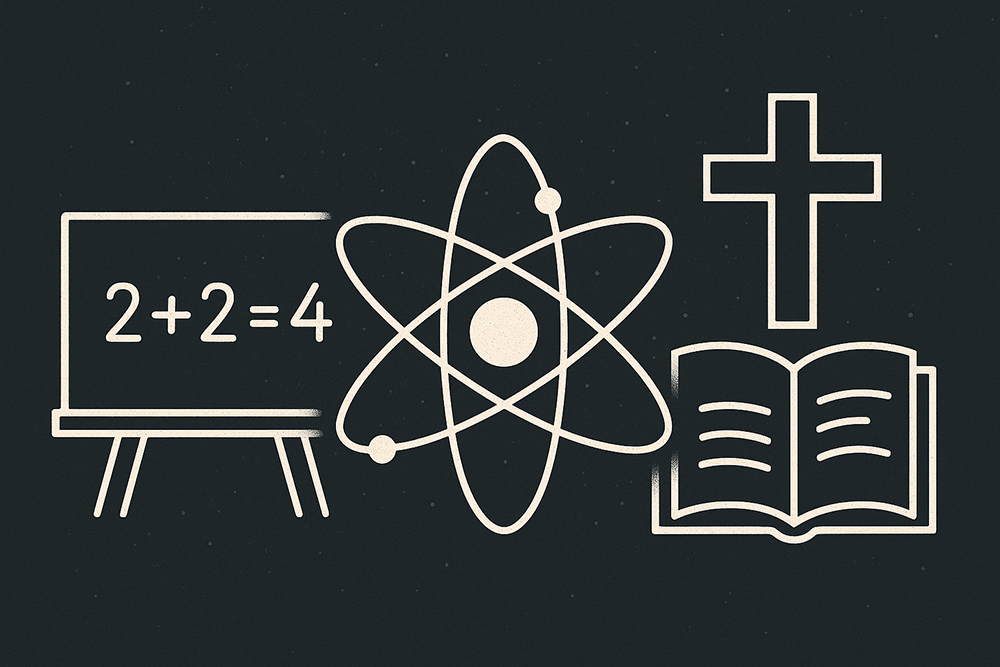We often hear that science is about facts and evidence, while faith is about blind belief. Some even claim that mathematics is just an invented tool we use to describe the world. But when you take a closer look, the lines between math, science, and faith aren’t as clear as people think. In fact, all three rest on something deeper — a kind of trust in things we can’t fully see from within our own system.
We Can’t See Outside the System
Imagine trying to understand a movie while you’re stuck inside one of its scenes. You can see what’s happening around you, maybe even predict what might come next based on what you’ve seen before. But you can’t step outside the screen to view the whole plot. That’s kind of where we are in the universe. We experience time, space, and physical laws from the inside. We study what’s around us, but we can’t step “outside” to see the full picture.
Science helps us make sense of the system we live in. It relies on observation, testing, and repeatability. But it’s always working from within. We can’t run a lab test on why the universe exists at all, or what lies beyond time itself. That doesn’t mean those questions aren’t real — just that science alone might not be able to reach them.
Math Isn’t Just a Human Invention
Some say math is something we invented, like a language or a game. But the more we study it, the more it seems like something we discover. We didn’t invent the fact that 2 + 2 = 4, or that prime numbers go on forever. We found those truths, and they seem to exist whether we understand them or not. Even in advanced theories like string theory, where we can’t yet run experiments, scientists rely on math to explore possibilities that seem real even without direct evidence.
So where does faith come in? Math assumes consistency, logic, and order — all things we believe in before we ever test a theory. That belief is a kind of faith, not blind, but based on reason and repeated experience.
Science and Faith Both Rely on Evidence
Faith, at its core, isn’t about shutting your eyes and believing something just because. At least, not when we’re talking about thoughtful, reasoned faith. It’s about trusting in what the evidence points to, even if we can’t see it all firsthand. That’s exactly what science does. We believe in black holes, electrons, and the Big Bang not because we’ve seen them with our own eyes, but because the evidence supports their existence.
When we trust a scientific theory, we’re relying on the work and observations of others. We trust that the methods were sound, the data was accurate, and the conclusions are reasonable. That’s not so different from trusting a historical account, or from reasoning through questions about meaning and purpose.
Faith Isn’t the Opposite of Science
The real divide isn’t between science and faith, but between thoughtful investigation and blind assumption. Science and faith can both be built on careful reasoning, evidence, and a willingness to follow the truth wherever it leads. They ask different questions, but they often point in the same direction.
In the end, whether you’re working with equations, microscopes, or big questions about life itself, you’re stepping into the unknown with a kind of faith — not empty belief, but a trust that truth can be found, even if we’re still inside the scene.





